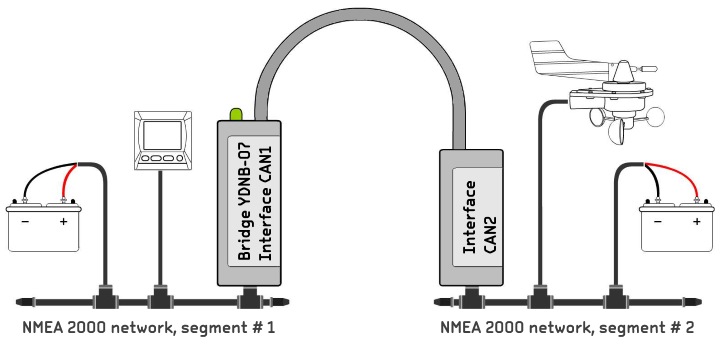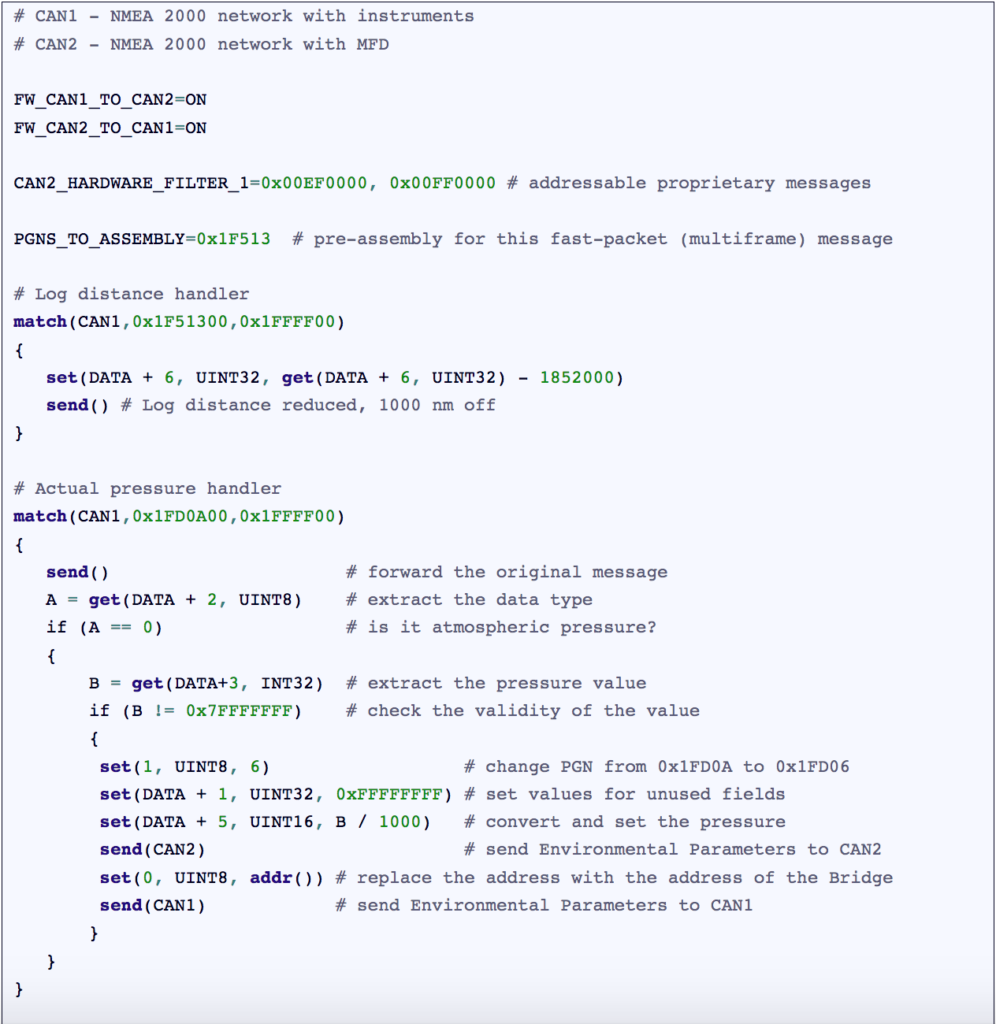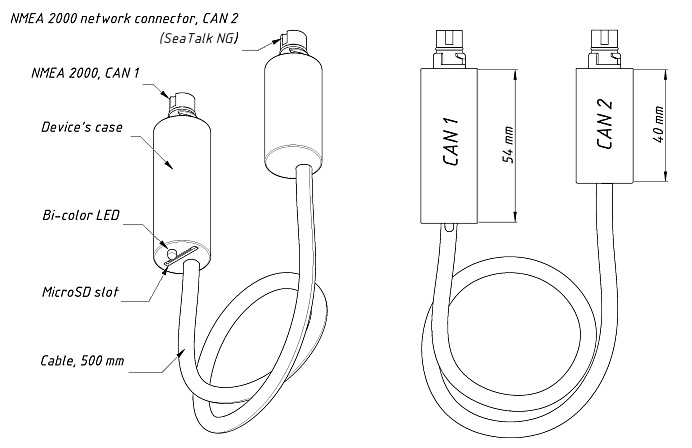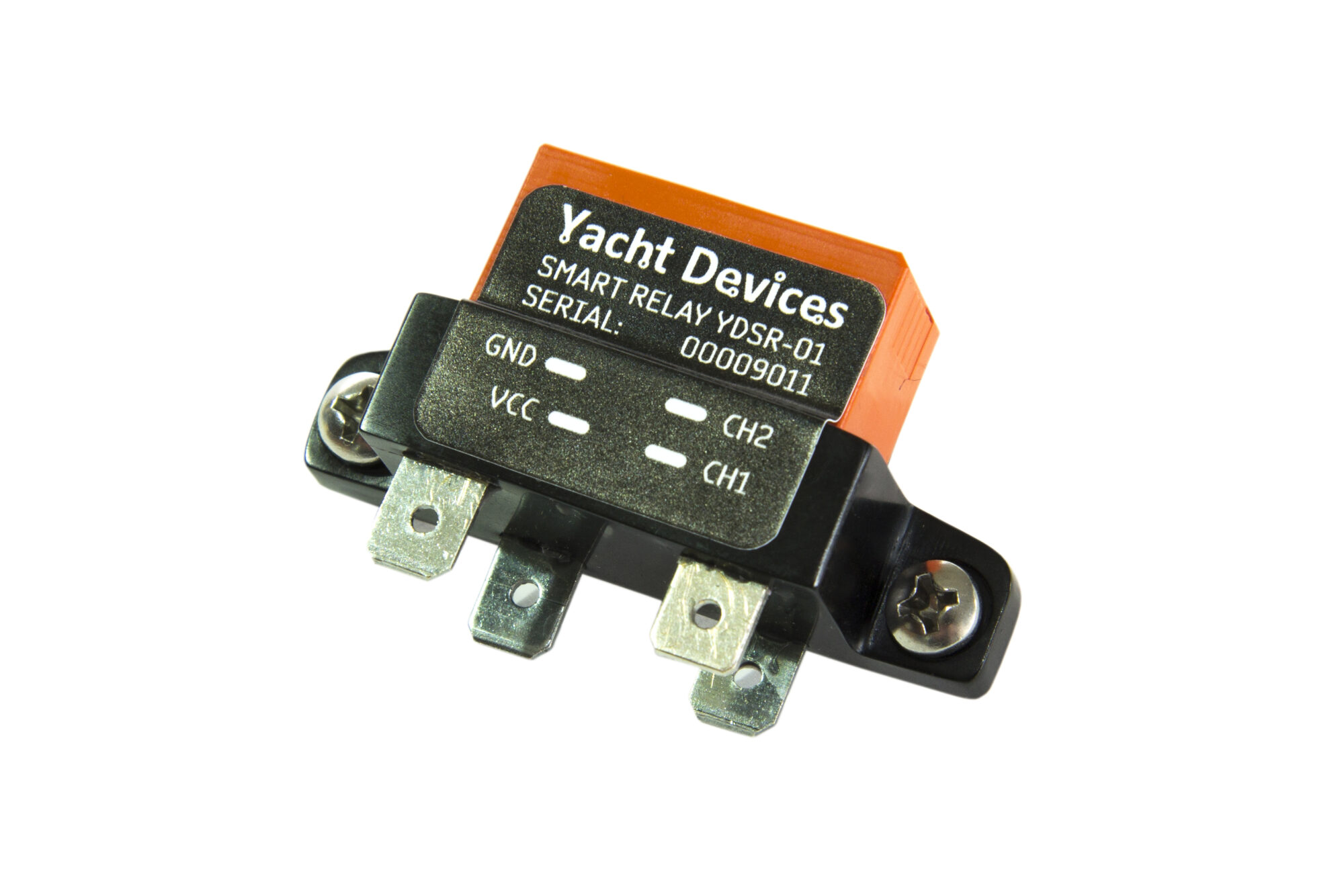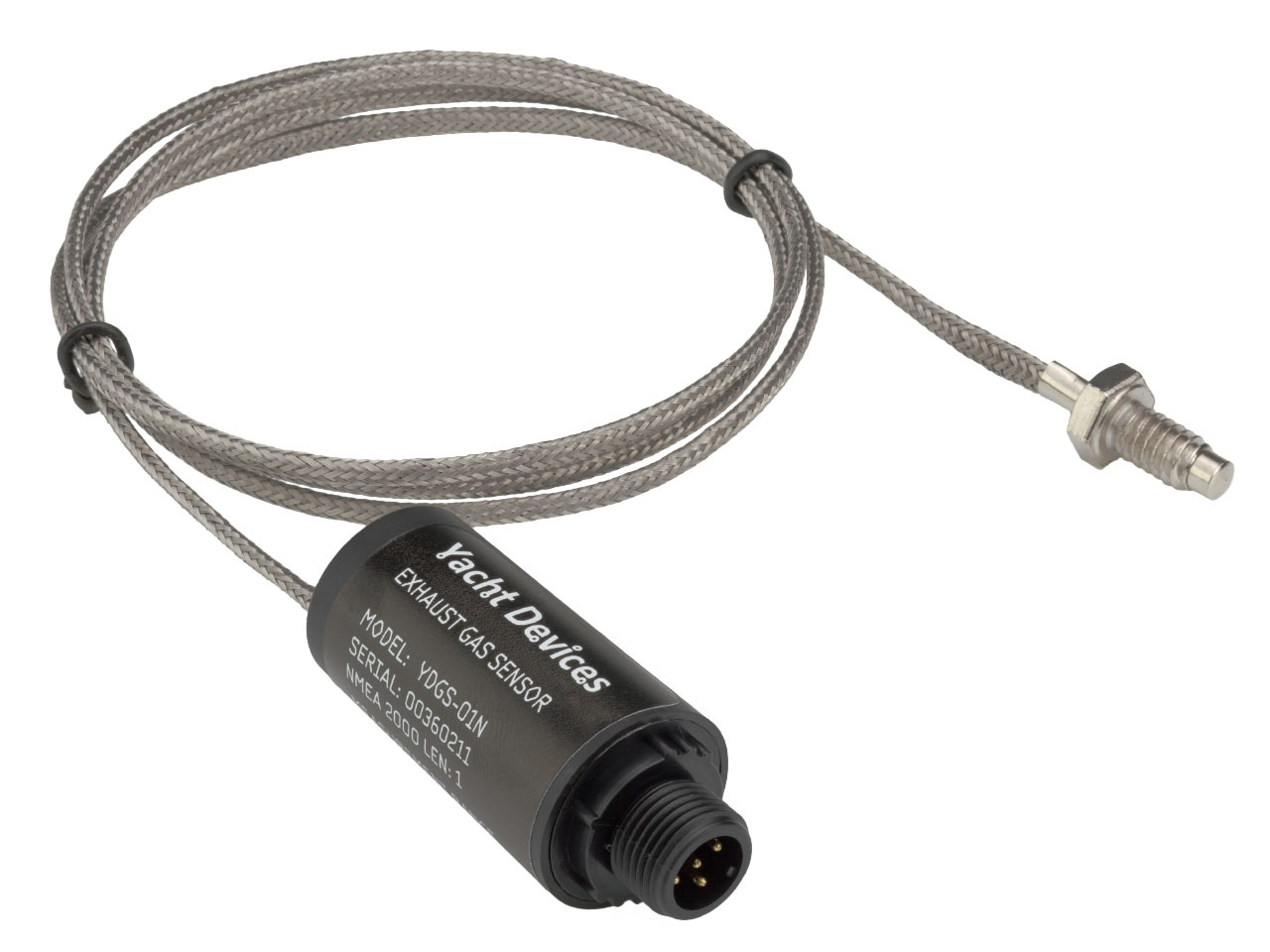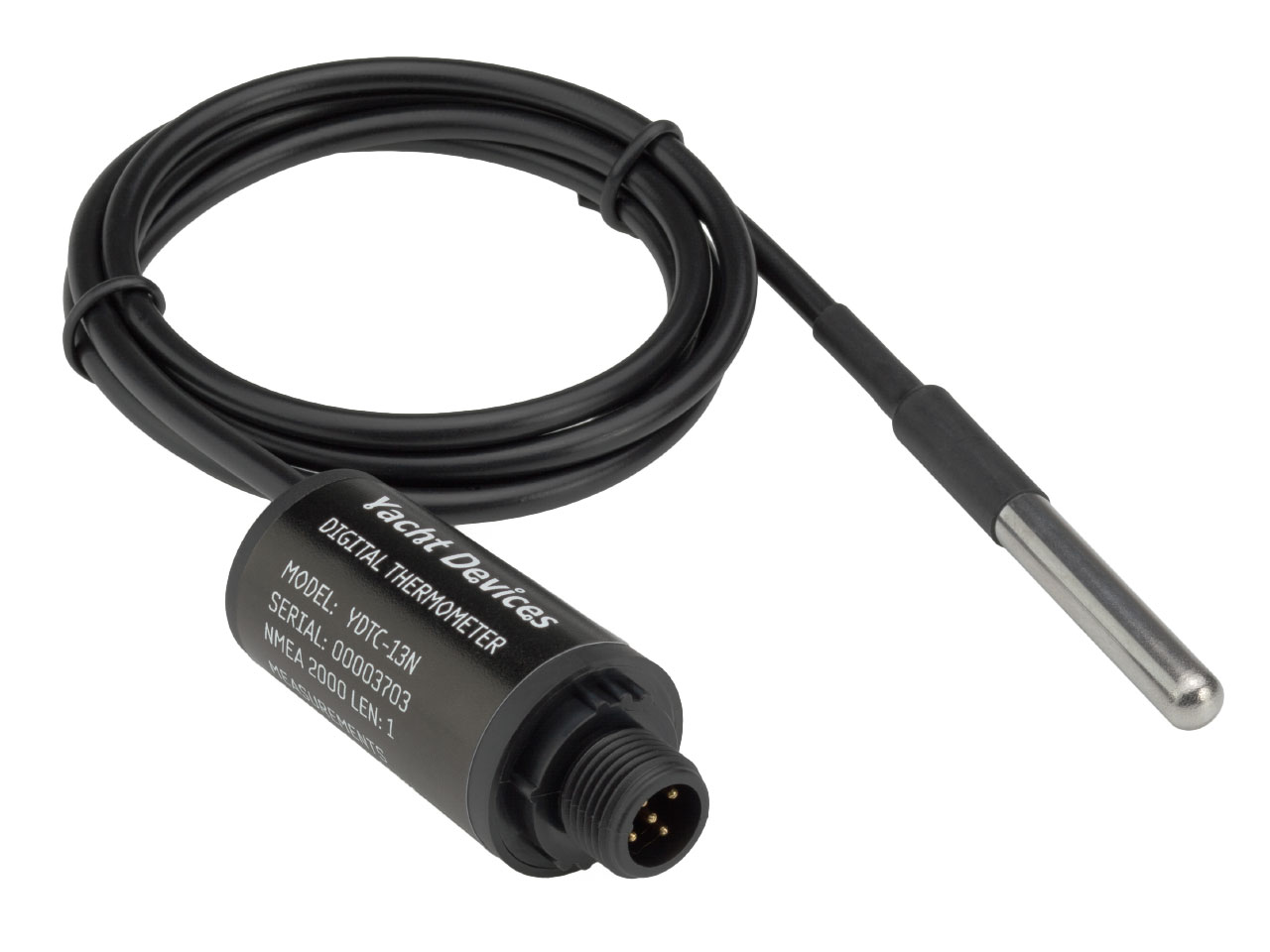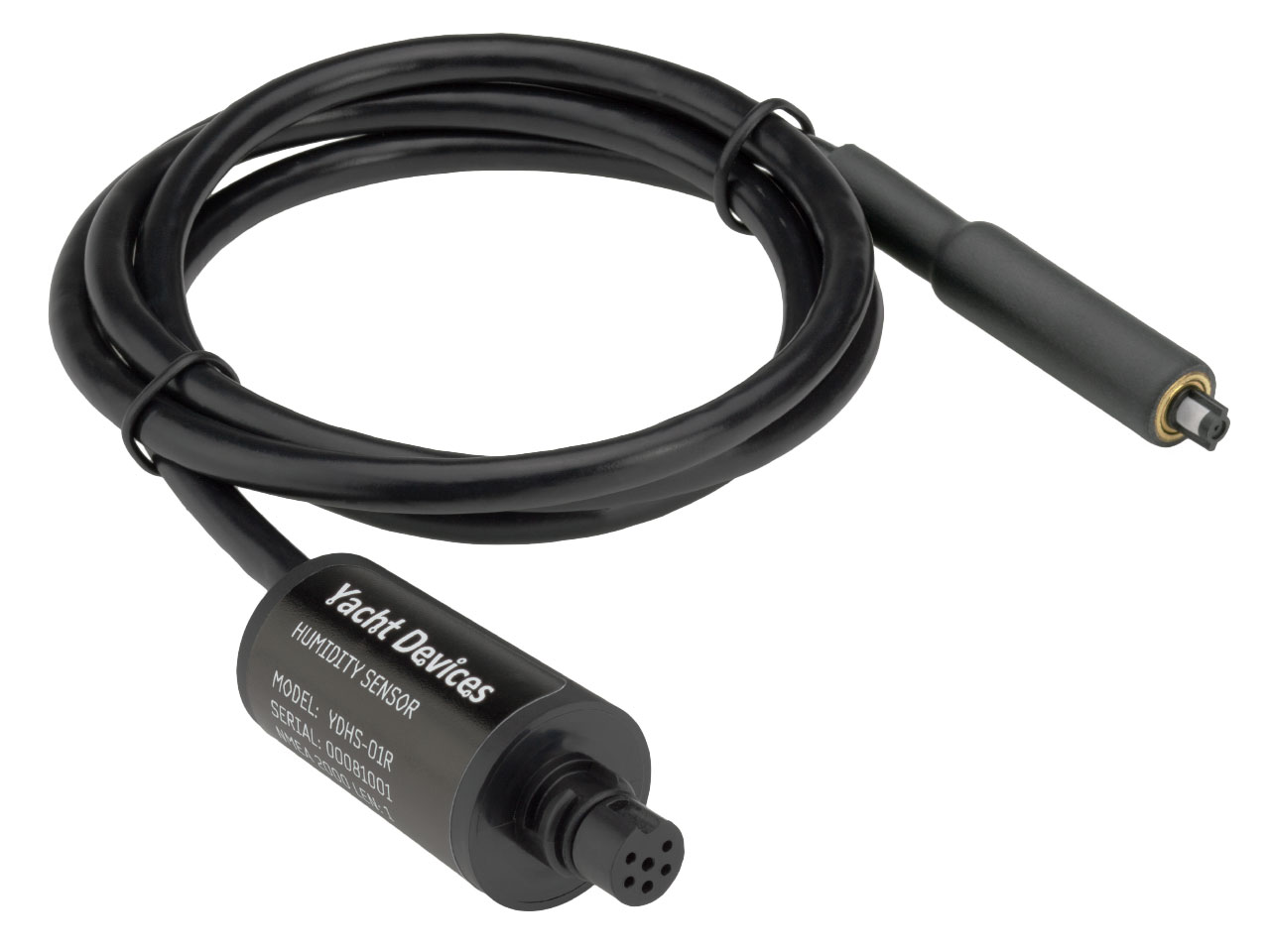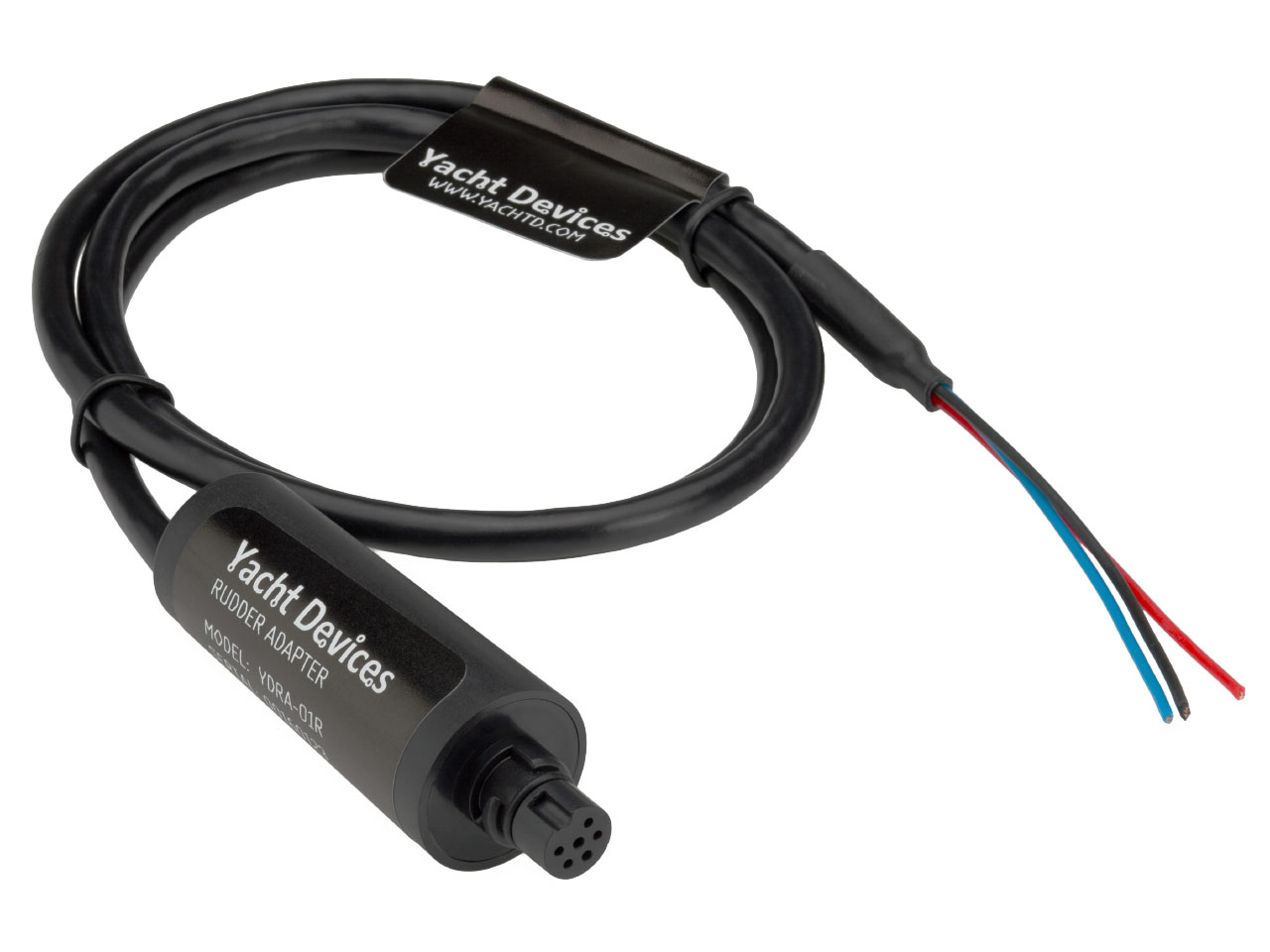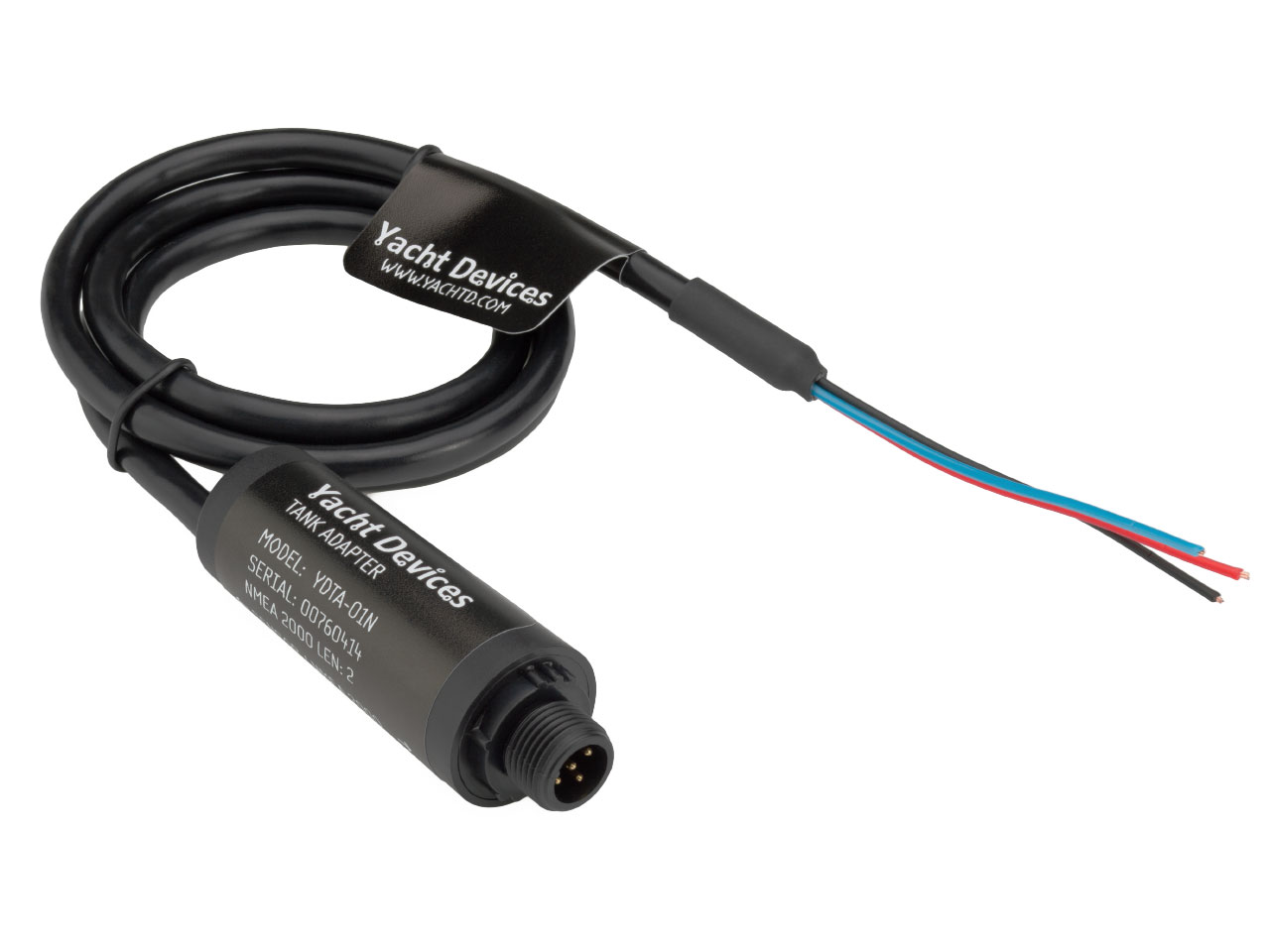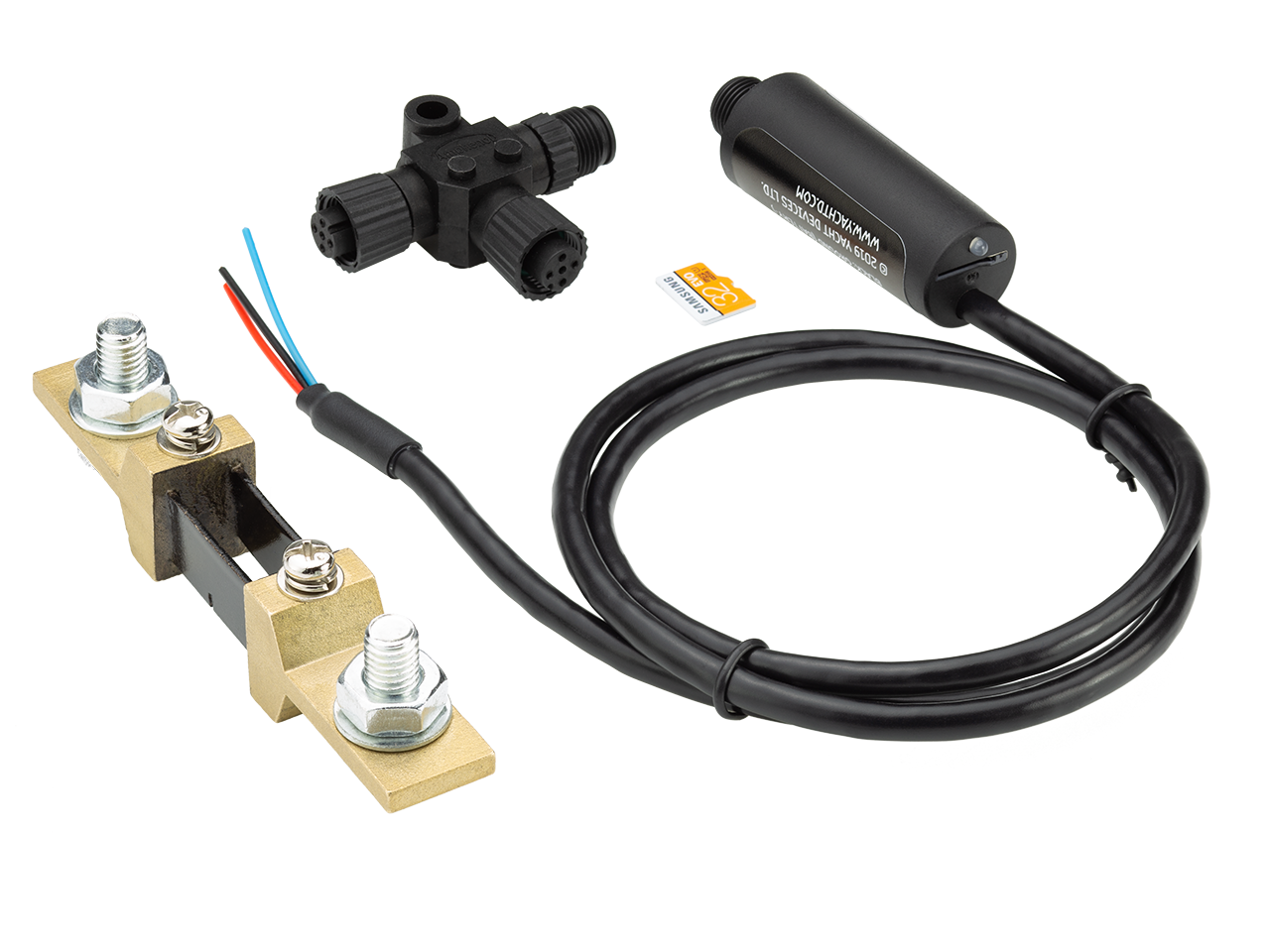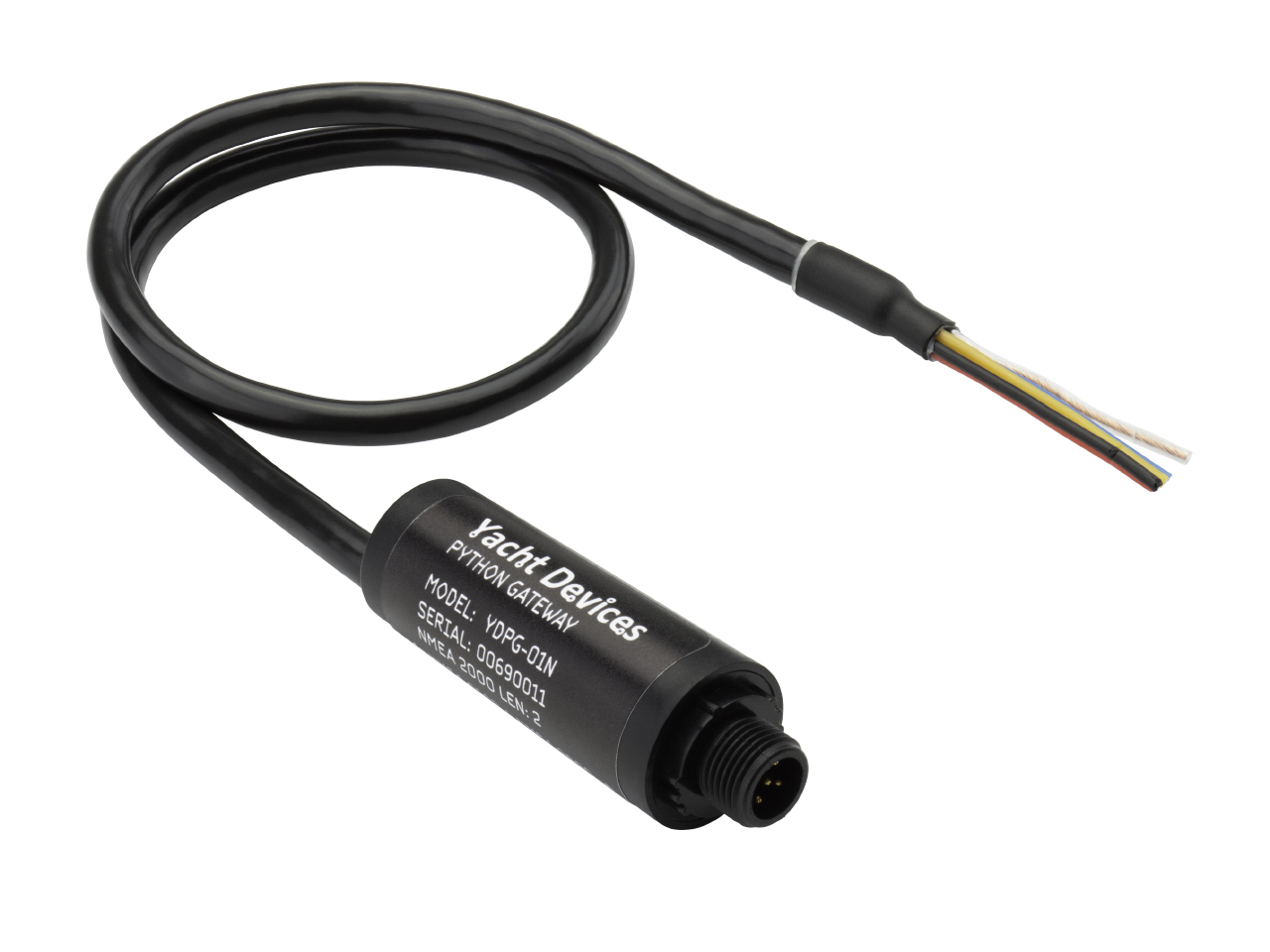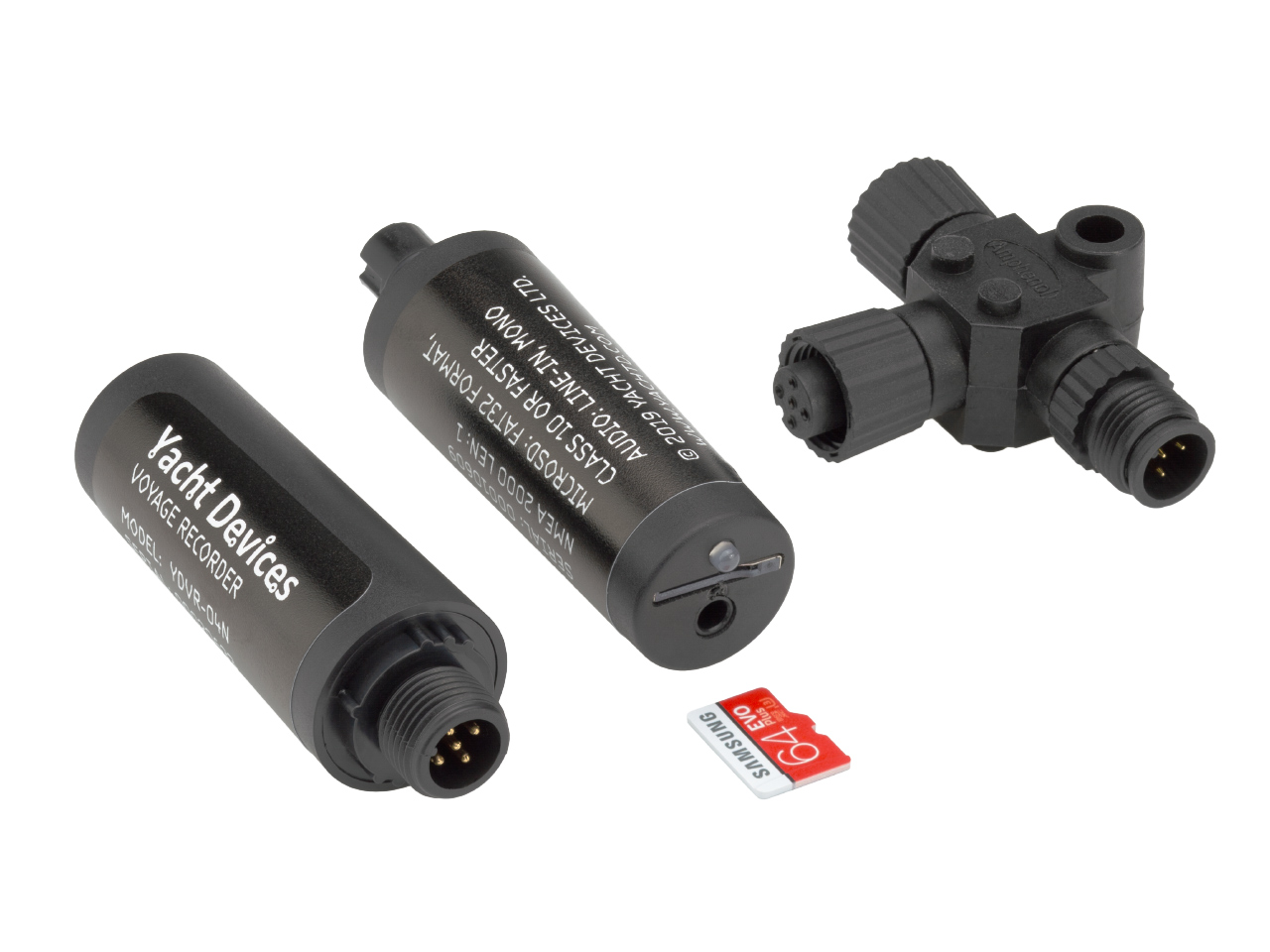Yacht Devices NMEA Bridge unifies two physical NMEA 2000 networks into a single logical network, smoothly exchanging messages between them. The Device also supports filtering and processing of transmitted messages.
This can accomplish the following tasks:
- Bypass the physical limits of NMEA 2000 networks concerning length of networks (100 meters for regular cable and 250 meters for heavy or mid-type cable) and concerning the maximum number (50) of physical devices attached to the network. On a network with address capacity of 252, multiple bridges can be engaged to expand to around 250 physical devices.
- Isolate devices from each other. Using the simple filter, you can block transmission of all or of selected messages from a given device in a separate subnet.
- Ensure proper functioning of equipment. Correct the transducer offset of the depth sounder, or “delete” invalid data in messages from equipment that is only partially operational using a 2- or 3-line script.
- Ensure compatibility of equipment from different generations. You can create and send any type of NMEA 2000 message using data from other messages in the network.
- Diagnose malfunctions in the NMEA 2000 network. The Device can record network messages and debug data from custom programs on a MicroSD card in a text file. You can view the data in a standard text editor on a smartphone or tablet with a MicroSD slot, there is no need for a computer. You can even create and edit programs for the Device right on your phone!
- Free diagnostics software is supplied for Microsoft Windows, Mac OS X and Linux. It allows to play, view and convert binary log files with NMEA 2000 messages from both CAN interfaces.
- Safely connect devices that do not meet NMEA 2000 standards. One of the CAN-interfaces on the device has high-voltage galvanic isolation and can operate at a higher supply voltage.
- Create gateways for networks based on CAN protocol operating at a speed of 50, 125, 250, 500 and 1000 kbps. The programming language of the device is not designed for full-fledged applications, but one can create, for example, a gateway from a J1939 network to NMEA 2000.
- Distrubute encrypted programs protected from unauthorized copying and/or modification.


